2024's Top No-Code Platforms for App Development
The world of app development is undergoing a seismic shift. For decades, the potential for creating effective software programming solutions has turned into an exclusive area reserved for programmers who have enjoyed years of coding. This created a significant barrier to entry and left endless revolutionary ideas trapped in drawing papers due to a lack of technical know-how. Enter no-code development, an innovative movement that breaks down these barriers and democratizes app creation. Imagine a world where anyone, regardless of their coding background, can bring their app ideas into existence. With no-code platforms, this is now not a futuristic dream, but a present reality. Imagine a world where anyone, regardless of their coding background, can bring their ideas for lifestyle apps. With code-free platforms, this is not a futuristic dream, but a present reality. This paradigm shift in app development enables people and businesses to unleash their app talents or capabilities, accelerate innovation, and revolutionize the way they design and interact across the process of development.
But what exactly is the no-code development and how is it shaking up the mobile software or mobile app development landscape? Dive in with us as we explore the exciting world of no-code, discover its transformative power, and equip you with the information to harness its energy.

Also Read | Mobile App Development Trends in 2024
Demystifying No-Code: What is it and How Does it Work?
The phrase "no code" may also sound inaccessible, but its essential concept is refreshingly simple. Basically, the platforms of no-code developments offer a visual interface and pre-built components that eliminate the need to write traditional code. Think of it like building with Lego bricks - instead of writing complex code stems, you drag and drop pre-programmed elements/factors to create useful applications.
Here's how no-code platforms enable applications to come:
- Drag-and-drop interface: Say goodbye to lines of code and include user-friendly interfaces where you visually build your app by dragging and dropping pre-built components like buttons, menus, and data tables.
- Pre-built Templates and Modules: You don't need to start from scratch - take advantage of a large library of pre-built templates and modules for common functions such as consumer login, e-commerce functionality, and listing integration, saving you time and effort.
- Visual workflows: Instead of complex coding logic, visualize and define the flow of your application using intuitive flowchart-like tools that make understanding and manipulating application functions less complicated.
- Low-code integration: Some platforms offer "low-code" functionality for users who are comfortable with primary coding, allowing them to customize specific functionality over pre-built alternatives.
This efficient combination of equipment allows anyone, from total novices to tech-savvy customers, to quickly prototype and build purposeful applications without slowing down the complexity of coding.
Benefits of No-Code Development:
- Faster development: Build apps in weeks or even days, compared to months or years with traditional coding.
- Lower cost: Eliminate the need for expensive developers, making app development more accessible for individuals and startups.
- Increased accessibility: Open the door to app creation for anyone with an idea, regardless of their technical background.
- Rapid prototyping: Easily iterate and test your app concepts without committing extensive resources.
- Simplified maintenance: Manage and update your app easily even without coding expertise.
Limitations of No-Code:
- Limited customization: pre-built components may restrict flexibility for highly complex or unique app designs.
- Vendor lock-in: Switching platforms might be difficult if your app becomes heavily reliant on vendor-specific features.
- Security concerns: Ensure the platform has robust security measures to protect your app and user data.
Despite these limitations, the no-code development offers anyone a game-changing opportunity within the app development concept. By knowing its ideas and capabilities, you can unlock a whole new generation of creativity and innovation within the application development panorama.
Also Read | Business mobile app Development
Unveiling the Powerhouse: Popular No-Code Platforms and Tools
The no-code landscape is filled with many systems or platforms, each providing precise strengths and catering to different wants. Navigating this abundance can be overwhelming, but don't worry! We'll uncover some of the most popular no-code platforms, highlight their key features, and target audiences, to help you find the ideal and imaginative suit for your application.
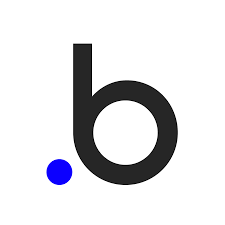
- Claim to fame: Renowned for its flexibility and scalability, allowing complex app development with a robust plugin marketplace.
- Strengths: Ideal for building complex web applications, MVPs, and internal tools. Offers extensive data management, user roles, and API integrations.
- Target audience: Developers, entrepreneurs, and businesses seeking advanced app features.
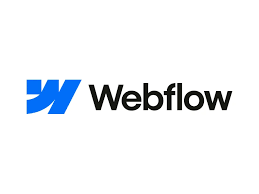
- Selling point: Design-centric platform ideal for crafting visually stunning apps and websites with drag-and-drop ease.
- Strengths: Stands out for its design capabilities, offering full CMS functionality and seamless integration with design tools like Figma.
- Target audience: Designers, agencies, and businesses prioritizing aesthetics and content management.
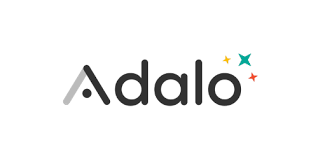
- USP: User-friendly interface and mobile-first development approach, perfect for building native mobile apps without code.
- Strengths: Streamlined mobile app development with offline capabilities, user authentication, and push notifications.
- Target audience: Individuals and businesses creating mobile apps with a focus on user experience.
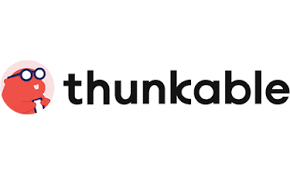
- Uniqueness: Built specifically for native iOS and Android app development, offering a beginner-friendly approach.
- Strengths: Intuitive, block-based coding interface for visual programming, ideal for learning or simple mobile app prototypes.
- Target audience: Beginners, educators, and individuals building basic mobile apps.

- Value proposition: Streamlines app creation from Google Sheets, converting spreadsheets into functional mobile apps in minutes.
- Strengths: Effortless app creation from existing data, perfect for internal tools, data dashboards, and simple customer-facing apps.
- Target audience: Businesses leveraging Google Sheets, and individuals wanting quick data-driven apps.
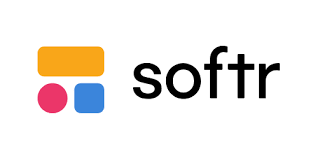
- Claim to fame: Renowned for its user-friendly interface and focus on creating internal business tools, web applications, and customer portals.
- Strengths: Streamlines building internal tools for data management, project management, customer support, and more. Offers integrations with popular services like Google Sheets and Stripe.
- Target audience: Businesses seeking internal tools, startups building MVPs, and individuals managing data-driven workflows.

- Selling point: Powerful enterprise-grade platform ideal for building complex business applications and automating workflows.
- Strengths: Robust security features, scalability for large organizations, integration with legacy systems, and advanced data management capabilities.
- Target audience: Enterprises requiring complex process automation, large-scale app development, and integration with existing IT infrastructure.

- Uniqueness: Integrates seamlessly with the Microsoft ecosystem, ideal for businesses already using Microsoft products.
- Strengths: Drag-and-drop app creation for mobile and web, integration with SharePoint, Dynamics 365, and Power Automate, offline capabilities.
- Target audience: Businesses within the Microsoft ecosystem seeking enterprise-grade no-code solutions, and individuals familiar with Microsoft tools.

- Value proposition: Cloud-based platform focusing on low-code development with visual modeling and pre-built components.
- Strengths: Hybrid development option for combining no-code and traditional coding, extensive app templates and modules, and built-in AI capabilities.
- Target audience: Businesses requiring both no-code simplicity and some custom coding flexibility, developers seeking low-code assistance for specific functionalities.
Wix:

- USP: Popular website builder platform offering no-code app development capabilities within its ecosystem.
- Strengths: Easy-to-use interface for building mobile apps connected to existing Wix websites, e-commerce functionalities, and marketing automation tools.
- Target audience: Businesses with existing Wix websites, and individuals creating simple mobile apps connected to their website content.
This is just a glimpse into different no-code environments or ecosystems. Remember that choosing the right platform depends on your exact wishes, technical knowledge, and finances. Before you make your choice, do your research carefully, explore unfastened tests, and don't forget about elements like platform features, pricing models, and community help.
Beyond these individual platforms, remember that the no-code world is constantly evolving. New players emerge regularly, and existing platforms add features and functionalities rapidly. Stay informed about the latest trends and explore different options to find the perfect match for your app development journey.
Also, Read | Ai-Infused Mobile App Development
Unleashing Innovation: Real-World Case Studies of No-Code Success
Codeless development isn't just theoretical hype; it is already disrupting industries and enabling individuals to turn their ideas into reality. Let's discover some compelling case studies that demonstrate the transformative power of non-code in many areas:
Education:
- CoderDojo: This non-profit organization trains aspiring programmers by building an internal learning management system entirely on Bubble. This no-code tool enabled them to quickly create a scalable and user-friendly platform for online courses, assessments, and community features, significantly enhancing their operations.
Healthcare:
- Kaleida Health: This company developed a teletherapy app for mental health services using Thunkable's no-code platform. This enabled them to reach a wider audience quickly and affordably, offering accessible therapy solutions without extensive coding resources.
Finance:
- Wayflyer: This financial technology company built its customer onboarding platform with Webflow, allowing it to streamline the application process and improve user experience. The platform's visual design capabilities contributed to building trust and transparency with their clients.
E-commerce:
- Bombas: This popular sock brand built its e-commerce store entirely on Shopify, a platform with robust no-code capabilities. This decision enabled them to launch quickly and adapt to changing customer needs easily, contributing to their rapid growth.
Business Automation:
- Airtable: This versatile platform allows businesses to create no-code solutions for various tasks, such as inventory management, project tracking, and customer relationship management. For example, a small business could use Airtable to build a customized CRM system without technical expertise, saving time and resources.
These are just a few examples of how no-code development is driving innovation across diverse industries. The key takeaways here are clear:
- No code empowers individuals and businesses with limited technical resources to build functional and impactful applications.
- The user-friendly nature of these platforms enables faster development cycles and quicker adaptation to evolving needs.
- No-code solutions can be highly scalable and secure, catering to various project sizes and complexities.
Also, Read | 10 Technological Forecasts for the Software Development Sector by 2024
Embarking on Your No-Code Odyssey: A Beginner's Guide
The Panorama of no-code development is full of exciting possibilities to turn your app ideas into reality. But where to start? This phase equips you with the important tools and resources to embark on your code-free adventure and start building your dream app.
- Define Your Needs and Goals:
- What problem are you trying to solve with your app?
- Who is your target audience?
- What functionalities are essential for your app?
- What level of complexity do you anticipate?
The answers to these questions will help you choose the right no-code platform for your specific needs and technical capabilities
Explore the No-Code Landscape:
- Research and compare popular platforms like Bubble, Webflow, Adalo, Thunkable, Glide, and others.
- Read reviews, watch tutorials, and try out free trials to get a feel for different interfaces and functionalities.
- Join online communities and forums like the No-Code subreddit or Facebook groups to connect with other no-code enthusiasts and learn from their experiences.
Start with Learning Resources:
- No-code platforms often offer extensive documentation and tutorials. Take advantage of these resources to learn the basics of their interface and functionalities.
- Numerous online courses, workshops, and boot camps specialize in no-code development. Consider investing in structured learning if you want a deeper understanding or prefer guided instruction.
- YouTube channels and blogs dedicated to no-code provide valuable insights, tips, and project inspiration.
Build Your First No-Code App:
- Don't be afraid to start small! Choose a simple project to familiarize yourself with the platform and its capabilities.
- Utilize pre-built templates and components to accelerate your development process.
- Focus on functionality first, then gradually add more features and polish.
- Test your app thoroughly and iterate based on user feedback.
Leverage the Community:
- Don't hesitate to ask for help! No-code communities are incredibly supportive and willing to assist beginners.
- Share your progress, challenges, and successes with others to learn and inspire each other.
- Contribute to the community by sharing your knowledge and helping others.
Remember that the journey of learning no-code development is continuous. Embrace the process, experiment with special textures and tools, and most of all, laugh! With determination and persistence, you can limit the possibilities of improving your app and turn your ideas into tangible solutions that make an impact in the arena.
Also Read | Cross-Platform App Development: Modern Tools and Platforms
Conquering the Code-Free Frontier: Overcoming Challenges and Ensuring No-Code Success
Your no-code adventure is underway! As you navigate the exciting yet uncharted territory of building without code, challenges may arise. But fret not, for we're here to equip you with the knowledge and strategies to overcome them and ensure your no-code success:

Facing the Limitations:
- Limited customization: While pre-built components offer convenience, they might not always fit your unique vision. Remember, no-code platforms are not design agencies; embrace their strengths while understanding their boundaries.
- Vendor lock-in: Carefully consider long-term scalability and potential migration challenges before heavily relying on specific platform features. Explore platforms with open APIs or export options for future flexibility.
- Security concerns: Choose platforms with robust security measures and prioritize data encryption, user authentication, and regular backups to protect your app and user information.
Strategies for Smooth Sailing:
- Start small and iterate: Don't attempt to build a complex app on your first try. Begin with a simple project, gather feedback, and iteratively improve upon it.
- Community is your compass: No-code communities are invaluable resources. Seek help, share experiences, and learn from others who have encountered similar obstacles.
- Stay informed and adapt: The no-code landscape is constantly evolving. Keep yourself updated on new features, tools, and best practices to ensure your app remains competitive and secure.
- Think beyond coding: While no code eliminates writing code, it doesn't replace critical thinking and problem-solving skills. Plan your app's architecture, user flows, and data management carefully for an optimized outcome.
Ensuring Long-Term Success:
- Focus on user experience: No matter how visually appealing your app is, prioritize intuitiveness, ease of use, and efficient navigation to keep users engaged and coming back.
- Data is your friend: Leverage analytics tools to track user behavior, identify areas for improvement, and make data-driven decisions to enhance your app's functionality and value.
- Seek expert guidance when needed: While no-code empowers individuals, complex projects might benefit from the expertise of freelance developers or agencies specializing in no-code solutions.
- Never stop learning: The no-code world is always expanding. Actively seek out new learning opportunities, explore advanced features, and stay inspired by the ever-evolving possibilities.
By accepting these challenges and adopting the recommended techniques, you'll be on your way to lasting success on your code-free journey. Remember, the secret is to be resourceful, adaptable, and passionate. The code-free panorama awaits your creativity, imagination, and insight, so jump ahead, build your dream app, and impress the virtual skyline!
Conclusion: Unleashing the Power of App Creation for All
The no-code revolution is reshaping the mobile app development landscape, removing barriers, and empowering people and corporations to fulfill their virtual lifestyle goals. This democratization of app development can unlock a wave of innovation across industries and give individuals previously unimaginable creative freedom.
As we've explored in this blog post, no-code development offers a multitude of benefits:
- Faster development: Build apps in weeks or days, not months or years.
- Lower cost: Eliminate the need for expensive developers, making app creation more accessible.
- Increased accessibility: Open the door to app creation for anyone with an idea, regardless of their technical background.
- Rapid prototyping: Easily iterate and test your app concepts without committing extensive resources.
- Simplified maintenance: Manage and update your app easily even without coding expertise.
However, it is important to approach non-code with practical expectations. While it offers amazing abilities, it's not a magic bullet right now. Remember its obstacles, embody its strengths, and constantly discover ways to navigate its evolving landscape.
By knowing the basics of non-coding, exploring different platform options, and adopting strategic tactics, you can conquer challenging situations and unlock the true capabilities of this transformative technology. So, take the first step, unleash your creativity, and be part of the no-code revolution!
Remember, the power to create impressive apps is not limited to coding experts. Take the opportunity to start your code-free journey today and turn your app dreams into reality.

 Hamid Salman
Hamid Salman